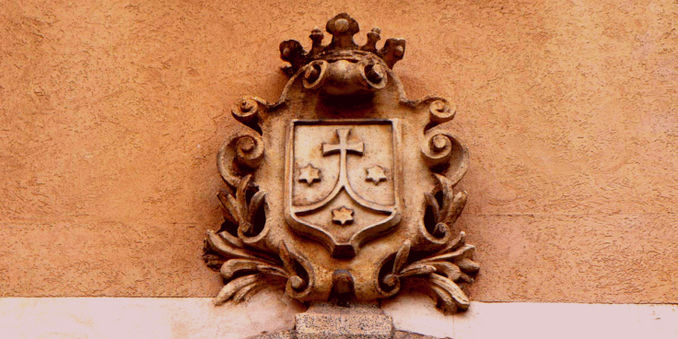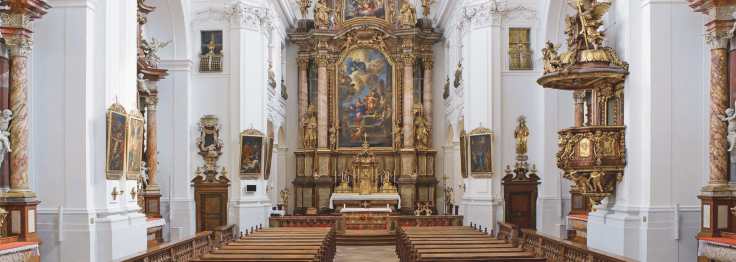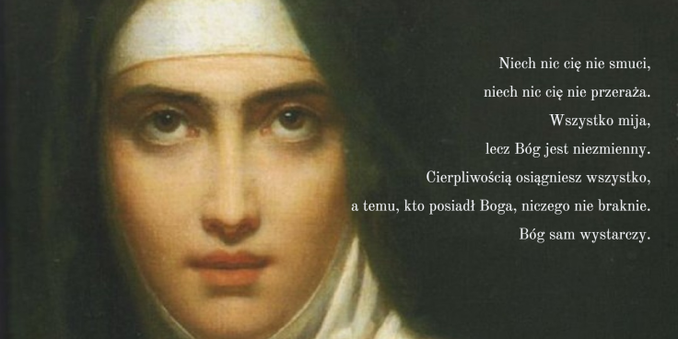Quote of the day, 26 November: St. Raphael Kalinowski
Saint Raphael Kalinowski’s last and longest stage of life is the thirty years (1877–1907) he lived in the Carmelite monastery. Consenting to the voice that called him to Carmel, Joseph Kalinowski entered formation, ready to work for God within the Church after decades of service as an engineer, military officer, prisoner of war in Siberia, professor and tutor.
On November 26, 1877, he went to Graz, Austria and was clothed in the habit of the Order, receiving at the same time his religious name: Raphael of Saint Joseph.
How did Kalinowski come to know Carmel? We turn to Father Szczepan T. Praskiewicz, OCD, for the details. He provides fascinating insights into the development of the Saint’s vocation.
Karmelitenkonvent Linz | Image credit: Discalced Carmelites In his Memoirs Saint Raphael tells us that early on during his exile in Siberia he happened upon a copy of a book written by Piotr Skarga, The Lives of the Saints:
That opened up many horizons for me. There I discovered a note on the Order of the Virgin Mary of Mount Carmel and its rapid diffusion in the West. It occured to me that precisely this Order should be able to bring the schismatics back to the Church of Rome. Guided in a marvelous way by Providence, I entered this Order ten years later.
As with every vocation story, there were many graced encounters that guided his steps along the way.
Saint Raphael Kalinowski had wanted to find a way to become a Carmelite friar, which is why he became a tutor to Gucio, the young son of the noble Czartoryski family residing in Paris. But in God’s providence and unbeknownst to Saint Raphael, one of his pupil’s aunts was a Discalced Carmelite nun in the Carmel of Krakow.
In true Teresian spirit, this aunt, Sr. Mary Xavier of Jesus was seeking young men to renew Carmelite life in Poland. When the Saint accompanied his young pupil on a trip from Paris to visit his aunt at the monastery in Krakow, Kalinowski made a profound impression upon the nun; still, it was the Holy Spirit that spoke to her spirit, impressing upon her the fact that her nephew’s tutor was sent by Divine Providence.
Without saying a word, Sr. Mary Xavier of Jesus began a prayer crusade for the family tutor and his vocation to the Discalced Carmelites; furthermore, she began to correspond with him.
Saint Raphael explained what had happened in a letter to his family back home in Vilnius, Lithuania:
I have a sign of the mercy and goodness of the Lord, which brought me hope and consolation through people consecrated to him. Gucio’s aunt, the Reverend Sister Mary Xavier of Jesus… whom I met only once at the grilles and who hardly knows me, only a few days ago—exactly when I least expected it—sent me the following poem of the seraphic Saint Teresa: Let nothing trouble you, let nothing frighten you…
Nada te turbe in the current Polish translation Fr. Praskiewicz tells us that St. Teresa’s famous Nada te turbe became Kalinowski’s motto. Soon after he received Sr. Mary Xavier’s letter, he wrote to his parents:
Each day I take strength from Saint Teresa’s words about which I wrote to you, my dear parents, in my last letter.
In the end, these very words were the source of divine inspiration that induced him to join the sons of St. Teresa, the Discalced Carmelite friars. He wrote to his parents on 4 November 1876:
A year ago there came to me, like an echo, a voice from the grilles of Carmel. This voice was clearly addressed to me and I have accepted it; it was a salvific voice from the infinite mercy of God commanding me. I can only exclaim, ‘I will sing the mercies of the Lord forever.’ The only thing that now remains for me to do is to ask your parental blessing.”
Kalinowski attended to the details, the housekeeping of his life as anyone aspiring to enter religious life would do: prepare to leave a job, a home, to travel and pray. On 5 July 1877, he left the Czartoryski family in Paris and traveled to Linz, Austria to meet the Discalced Carmelite provincial superior.
God rewarded Kalinowski for the steadfast pursuit of his vocation at such a mature age—Raphael of St. Joseph was 42 years old when he received the holy habit of Our Lady of Mount Carmel.
A statue of Saint Joseph in the Maria Schnee convent of the Discalced Carmelite friars in Graz, where St. Raphael Kalinowski entered the novitiate. Image credit: Eigenes Werk / Wikimedia Commons Praskiewicz OCD, S 2016, Saint Raphael Kalinowski: An Introduction to his Life and Spirituality, Translated from the Polish by Coonan, T, Griffin, M & Sullivan, L, ICS Publications, Washington DC.
Featured image: The Discalced Carmelite crest is seen above the main entrance to the friars’ convent in Linz, Austria. Both St. Raphael Kalinowski and St. Alphonsus Mary Mazurek passed beneath this hallowed gate; the friars in Linz also cared for the Servant of God Père Jacques Bunel after he was liberated from the Mauthausen-Gusen concentration camp in 1945. Image credit: Andrzej Otrębski / Wikimedia Commons (Some rights reserved)
#CarmeliteHabit #Clothing #Graz #Linz #NadaTeTurbe #novitiate #StRaphaelKalinowski #SzczepanTPraskiewicz #vocation



